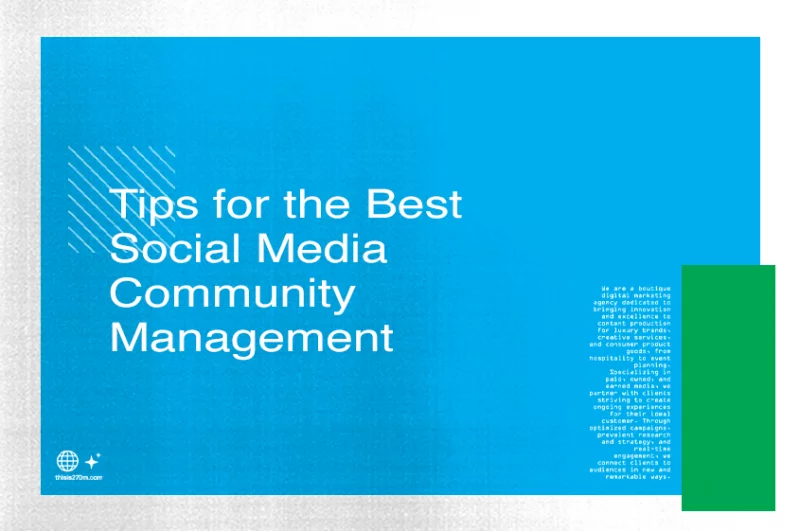Optimize Community Management for Your Brand
By: Danielle Gazda
Good social media content and a good product are the baselines for a successful online presence. However, great customer service keeps people coming back. Achieve the best online customer service with proactive community management.
What Is Community Management?
Community management is run by an individual or team that acts through the brand’s social media accounts. They address questions in direct messages, respond and engage with comments, and help the brand stay present in the wider community.
Community management is made up of all these bite-sized activities that can be done across social media channels to generate a brand’s organic, personable reputation.
Best Practices for Community Managers
Direct Messages
Whether it’s Instagram DMs, Facebook Messenger, or other platforms, it’s important to review these direct messaging channels daily. This is where people will often direct questions and complaints about products and orders — and they should be addressed in a timely manner.
Knowledge of your brand and what it sells is very important for this type of activity. Be sure to have an FAQ that community managers can refer to or a customer service email that can be shared for more in-depth questions. Give your community managers as much information as you can. They’ll be able to help your customers better and continue to grow your FAQ document as new questions arise.
Comments
It is nice for community managers to be active in the brand’s own comments. For smaller brands, try to respond to them all with an appropriate short reply, the answer to a question, or simply an emoji.
If you typically receive dozens to hundreds of comments per post, you can take a more measured approach. You can respond to the first dozen or so comments that the post receives or check the post frequently and reply to various comments as they come up.
Be sure to always respond to comments made by partnered brands or influencers. This includes unexpected comments from celebrities or influencers you don’t currently work with to build those relationships.
Community Engagement
Don’t forget about the wider community your brand is a part of. Like and comment on posts that are relevant to your brand and industry. These can be posts by those partnered brands and influencers to show your support, posts about industry news and knowledge, and fun, broader content.
Comments don’t have to be extensive. Simple replies such as agreement or emojis will often do, since this shows that your brand is aware of its larger community.
User-Generated Content
A brand’s image is only as good as what its most loyal customers have to say about it. Utilize user-generated short- and long-form content to your advantage. Potential customers are more likely to make a purchase after seeing real people use a product or service. This is great free content to share in places like Instagram Stories — but be sure to request permission before posting it directly to your feed.
Has your brand been keeping up with community management?

